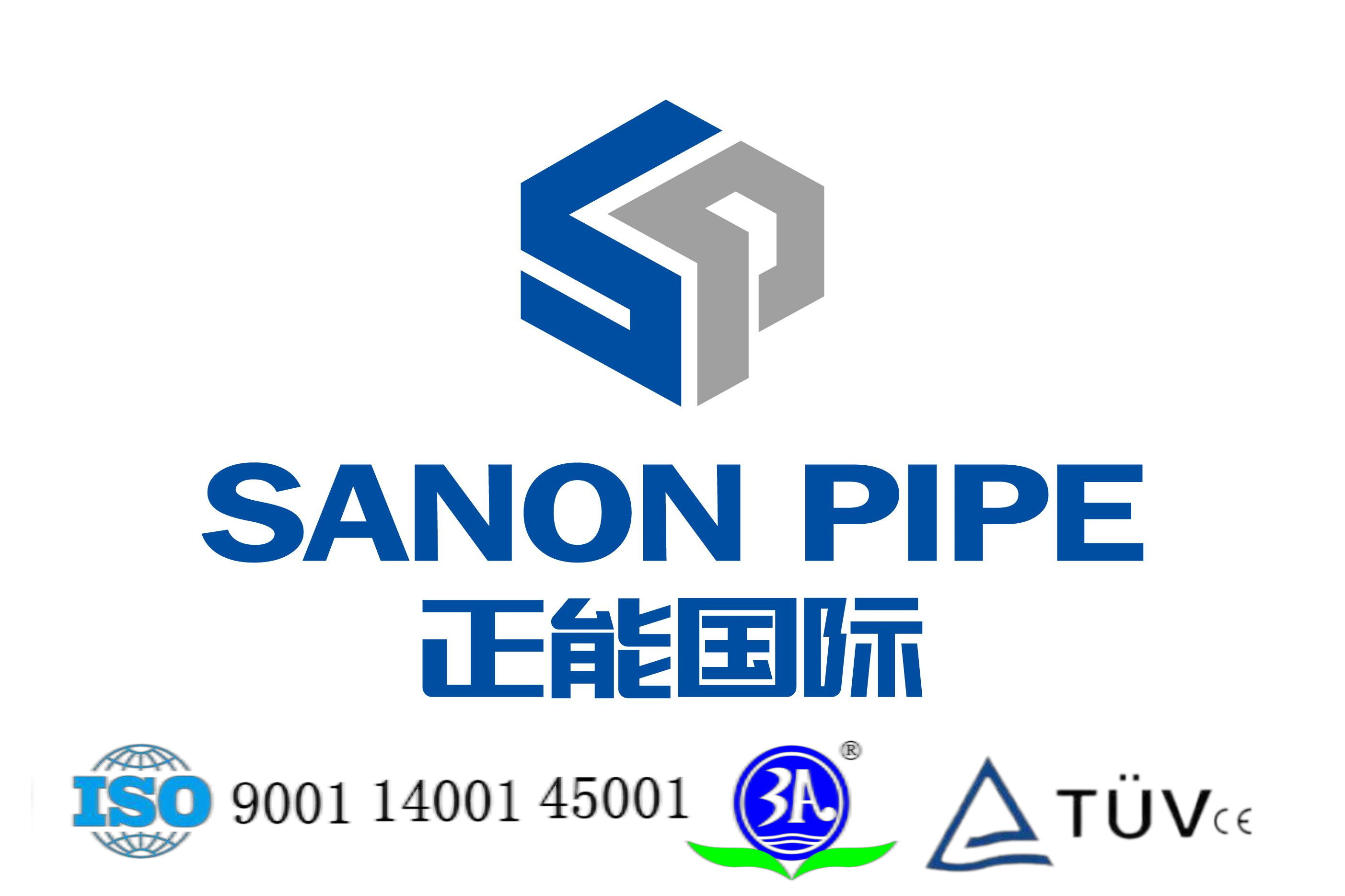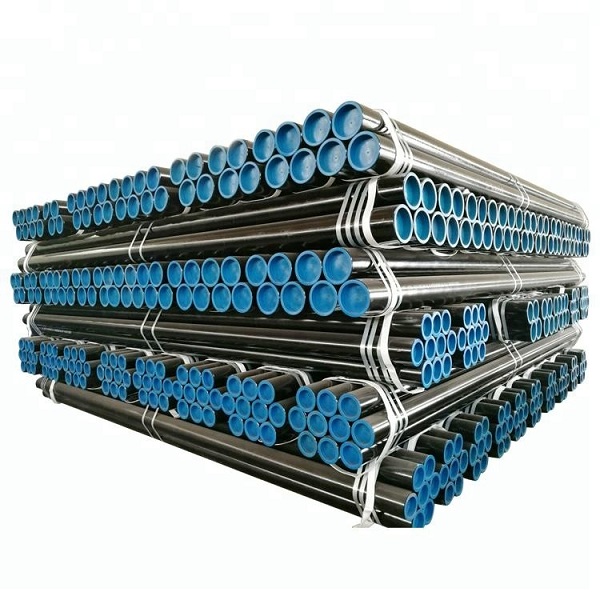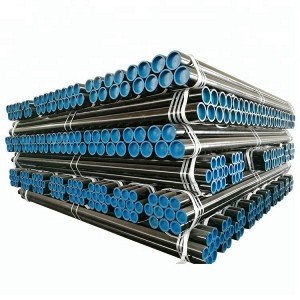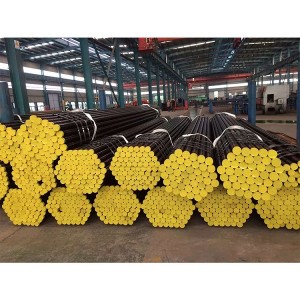Manufactur standard China API 5L 5CT Psl1/ Psl2 X42/X52/X46/X56/X60/X65/X70/X80 Seamless Line Steel Pipes
Overview
To be a result of ours specialty and repair consciousness, our corporation has won an excellent reputation amongst customers all around the entire world for API 5L 5CT Psl1/ Psl2 X42/X52/X46/X56/X60/X65/X70/X80 Seamless Line Steel Pipes, Encouraged with the fast producing current market on the speedy foodstuff and beverage consumables all around the entire world , We're hunting forward to functioning with partners/clients to create good results together. We have been always creating new technology to streamline the production, and supply products with competitive prices and high quality! Customer satisfaction is our priority! You can allow us to know your idea to develop unique design for your own model to prevent too much similar parts in the market! We are going to offer you our best service to satisfy all your needs! Please contact us right away!
Pipeline pipe: the oil, gas or water extracted from the ground is transported to the oil and gas industry by pipeline pipe.The pipeline pipe comprises two kinds of seamless and welded pipe, the pipe end has a flat end, a threaded end and a socket end;The connection mode is end welding, collar connection, socket connection and so on.
Pipeline pipe: the oil, gas or water extracted from the ground is transported to the oil and gas industry by pipeline pipe.Welded pipe is connected by fused welding line pipe, in general the length is longer, can satisfy the user's mass, but stability is not as good as one integrated mass of seamless tube, but are generally shorter the length of the seamless tube, cannot satisfy the consumer the use of the long distance, consumer is in use process need to undertake collocation use both.The pipeline pipe comprises two kinds of seamless and welded pipe, the pipe end has a flat end, a threaded end and a socket end;The connection mode is end welding, collar connection, socket connection and so on.
With the development of the pipeline steel plate technology and the progress of welded pipe forming, welding technology, the application range of the pipe with welded pipe in gradually expanding, especially in the large diameter welded pipe class scope the advantage of more wet, and cost factors, welded pipe has been dominant in the field of line pipe, which limits the development of stainless steel seamless steel line pipe.
API5L pipeline pipe production is currently using microalloying heating treatment process, stainless steel seamless pipe production cost is significantly higher than the welded pipe, and with the improvement of steel grade, such as X80 steel grade pipe on the limit of carbon equivalent, the conventional process of seamless steel pipe is difficult to meet user requirements
Transmission steel pipe is divided into PSL1, PSL2 two product grades, the main difference is that PSL2 compared with PSL1 on carbon equivalent, fracture toughness, maximum yield strength and maximum tensile strength requirements.The control of harmful elements such as phosphorus and sulfur is also stricter.Nondestructive testing of seamless tubes is mandatory.The contents of the warranty and the traceability after the experiment are mandatory.
The main performance requirements of oil and gas pipelines for steel include:
1. Strength: The general oil and gas pipeline is designed according to the yield strength of steel.Pipes with higher yield strength can withstand greater working pressure.
2. Toughness: Higher toughness of steel pipe can bring a lower rate of oil and gas pipeline rupture accident, so API 5L stipulates that, in addition to conventional mechanical properties, v-notch Charpy impact test and drop hammer tear test should be supplemented, and the steel pipe should be strictly nondestructive testing before leaving the factory.
3. Weldability: Due to the harsh field environment for laying pipelines, good weldability is required during butt welding of steel pipes.Pipes with low weldability will have cracks at the welding seam during welding, which will increase the hardness and toughness of the welding seam and the heat-affected area, and increase the possibility of pipeline rupture.The design principle of steel weldability is the control of martensite transition point and hardening.According to the influence of alloying elements on martensite transition point and practical experience, the calculation formula of carbon equivalent can be used to evaluate the weldability of steel.Generally, the carbon equivalent should be controlled below 0.4%. In fact, most steel mills are controlled below 0.35%.
4. Ductility: If the ductility is insufficient, it will lead to the formation of steel plate splitting during cold bending or cambium fracture during welding.Therefore, API standard for welded pipe out of the fixed flattening test, but also requires a customer-guided cold bending test.The key to improve the ductility is to reduce the non-metallic inclusions in steel and control the morphology and distribution of inclusions.
5. Corrosion resistance: when conveying sulfur oil and gas, hydrogen sulfide and carbon dioxide in the fluid will lead to hydrogen embrittlement and stress corrosion cracking of steel tubes.Measures such as controlling sulfur content, controlling sulfide form and improving toughness along wall thickness are generally adopted.Its main characteristics are microalloying and controlled rolling, which can obtain high strength, high toughness, high plasticity and good weldability under hot rolling condition.In order to fully meet the performance requirements of oil and gas pipelines for steel, strict alloy design, sulfur, phosphorus and other harmful elements are also very strict control.Generally, sulfur is less than 0.01% to improve the plasticity and toughness of steel, especially the transverse toughness.
Application
The pipeline is used to transport the oil, steam and water drawn from the ground to the oil and gas industry enterprises through the pipeline
Main Grade
Grade for API 5L line pipe steel: Gr.B X42 X52 X60 X65 X70
Chemical Component
| Steel Grade (Steel Name) | Mass Fraction, Based on Heat and Product Analyses a,g% | |||||||
| C | Mn | P | S | V | Nb | Ti | ||
| max b | max b | min | max | max | max | max | max | |
| Seamless Pipe | ||||||||
| L175 or A25 | 0.21 | 0.60 | — | 0.030 | 0.030 | — | — | — |
| L175P or A25P | 0.21 | 0.60 | 0.045 | 0.080 | 0.030 | — | — | — |
| L210 or A | 0.22 | 0.90 | — | 0.030 | 0.030 | — | — | — |
| L245 or B | 0.28 | 1.20 | — | 0.030 | 0.030 | c,d | c,d | d |
| L290 or X42 | 0.28 | 1.30 | — | 0.030 | 0.030 | d | d | d |
| L320 or X46 | 0.28 | 1.40 | — | 0.030 | 0.030 | d | d | d |
| L360 or X52 | 0.28 | 1.40 | — | 0.030 | 0.030 | d | d | d |
| L390 or X56 | 0.28 | 1.40 | — | 0.030 | 0.030 | d | d | d |
| L415 or X60 | 0.28 e | 1.40 e | — | 0.030 | 0.030 | f | f | f |
| L450 or X65 | 0.28 e | 1.40 e | — | 0.030 | 0.030 | f | f | f |
| L485 or X70 | 0.28 e | 1.40 e | — | 0.030 | 0.030 | f | f | f |
| Welded Pipe | ||||||||
| L175 or A25 | 0.21 | 0.60 | — | 0.030 | 0.030 | — | — | — |
| L175P or A25P | 0.21 | 0.60 | 0.045 | 0.080 | 0.030 | — | — | — |
| L210 or A | 0.22 | 0.90 | — | 0.030 | 0.030 | — | — | — |
| L245 or B | 0.26 | 1.20 | — | 0.030 | 0.030 | c,d | c,d | d |
| L290 or X42 | 0.26 | 1.30 | — | 0.030 | 0.030 | d | d | d |
| L320 or X46 | 0.26 | 1.40 | — | 0.030 | 0.030 | d | d | d |
| L360 or X52 | 0.26 | 1.40 | — | 0.030 | 0.030 | d | d | d |
| L390 or X56 | 0.26 | 1.40 | — | 0.030 | 0.030 | d | d | d |
| L415 or X60 | 0.26 e | 1.40 e | — | 0.030 | 0.030 | f | f | f |
| L450 or X65 | 0.26 e | 1.45 e | — | 0.030 | 0.030 | f | f | f |
| L485 or X70 | 0.26 e | 1.65 e | — | 0.030 | 0.030 | f | f | f |
|
a Cu ≤ 0.50 %; Ni ≤ 0.50 %; Cr ≤ 0.50 % and Mo ≤ 0.15 %. b For each reduction of 0.01 % below the specified maximum concentration for carbon, an increase of 0.05 % above the specified maximum concentration for Mn is permissible, up to a maximum of 1.65 % for grades ≥ L245 or B, but ≤ L360 or X52; up to a maximum of 1.75 % for grades > L360 or X52, but < L485 or X70; and up to a maximum of 2.00 % for Grade L485 or X70. c Unless otherwise agreed, Nb + V ≤ 0.06 %. d Nb + V + Ti ≤ 0.15 %. e Unless otherwise agreed. f Unless otherwise agreed, Nb + V + Ti ≤ 0.15 %. g No deliberate addition of B is permitted and the residual B ≤ 0.001 %. |
||||||||
Mechanical Property
|
Pipe Grade |
Pipe Body of Seamless and Welded Pipe | Weld Seam of EW, LW, SAW, and COWPipe | ||
| Yield Strength a Rt0.5 | Tensile Strength a Rm | Elongation(on 50 mm or 2 in.)Af | Tensile Strength b Rm | |
| MPa (psi) | MPa (psi) | % | MPa (psi) | |
| min | min | min | min | |
| L175 or A25 | 175 (25,400) | 310 (45,000) | c | 310 (45,000) |
| L175P or A25P | 175 (25,400) | 310 (45,000) | c | 310 (45,000) |
| L210 or A | 210 (30,500) | 335 (48,600) | c | 335 (48,600) |
| L245 or B | 245 (35,500) | 415 (60,200) | c | 415 (60,200) |
| L290 or X42 | 290 (42,100) | 415 (60,200) | c | 415 (60,200) |
| L320 or X46 | 320 (46,400) | 435 (63,100) | c | 435 (63,100) |
| L360 or X52 | 360 (52,200) | 460 (66,700) | c | 460 (66,700) |
| L390 or X56 | 390 (56,600) | 490 (71,100) | c | 490 (71,100) |
| L415 or X60 | 415 (60,200) | 520 (75,400) | c | 520 (75,400) |
| L450 or X65 | 450 (65,300) | 535 (77,600) | c | 535 (77,600) |
| L485 or X70 | 485 (70,300) | 570 (82,700) | c | 570 (82,700) |
| a For intermediate grades, the difference between the specified minimum tensile strength and the specified minimum yield strength for the pipe body shall be as given in the table for the next higher grade.b For intermediate grades, the specified minimum tensile strength for the weld seam shall be the same value as was determined for the pipe body using footnote a).c The specified minimum elongation, Af, expressed in percent and rounded to the nearest percent, shall be as determined using the following equation:
where C is 1940 for calculations using SI units and 625,000 for calculations using USC units; Axc is the applicable tensile test piece cross-sectional area, expressed in square millimeters (square inches), as follows: 1) for circular cross-section test pieces, 130 mm2 (0.20 in.2) for 12.7 mm (0.500 in.) and 8.9 mm (0.350 in.) diameter test pieces; 65 mm2 (0.10 in.2) for 6.4 mm (0.250 in.) diameter test pieces; 2) for full-section test pieces, the lesser of a) 485 mm2 (0.75 in.2) and b) the cross-sectional area of the test piece, derived using the specified outside diameter and the specified wall thickness of the pipe, rounded to the nearest 10 mm2 (0.01 in.2); 3) for strip test pieces, the lesser of a) 485 mm2 (0.75 in.2) and b) the cross-sectional area of the test piece, derived using the specified width of the test piece and the specified wall thickness of the pipe, rounded to the nearest 10 mm2 (0.01 in.2); U is the specified minimum tensile strength, expressed in megapascals (pounds per square inch). |
||||
Outside diameter, out of roundness and wall thickness
| Specified Outside Diameter D (in) | Diameter Tolerance, inches d | Out-of-Roundness Tolerance in | ||||
| Pipe except the end a | Pipe end a,b,c | Pipe except the End a | Pipe End a,b,c | |||
| SMLS Pipe | Welded Pipe | SMLS Pipe | Welded Pipe | |||
| < 2.375 | -0.031 to + 0.016 | – 0.031 to + 0.016 | 0.048 | 0.036 | ||
| ≥2.375 to 6.625 | 0.020D for | 0.015D for | ||||
| +/- 0.0075D | – 0.016 to + 0.063 | D/t≤75 | D/t≤75 | |||
| By agreement for | By agreement for | |||||
| >6.625 to 24.000 | +/- 0.0075D | +/- 0.0075D, but max of 0.125 | +/- 0.005D, but max of 0.063 | 0.020D | 0.015D | |
| >24 to 56 | +/- 0.01D | +/- 0.005D but max of 0.160 | +/- 0.079 | +/- 0.063 | 0.015D for but max of 0.060 | 0.01D for but max of 0.500 |
| For | For | |||||
| D/t≤75 | D/t≤75 | |||||
| By agreement | By agreement | |||||
| for | for | |||||
| D/t≤75 | D/t≤75 | |||||
| >56 | As agreed | |||||
| a. The pipe end includes a length of 4 in ate each of the pipe extremities | ||||||
| b. For SMLS pipe the tolerance apply for t≤0.984in and the tolerances for the thicker pipe shall be as agreed | ||||||
| c. For expanded pipe with D≥8.625in and for non-expanded pipe, the diameter tolerance and the out-of-roundness tolerance may be determined using the calculated inside diameter or measured inside diameter rather than the specified OD. | ||||||
| d. For determining compliance to diameter tolerance, the pipe diameter is defined as the circumference of the pipe in any circumferential plane divide by Pi. | ||||||
| Wall thickness | Tolerances a |
| t inches | inches |
| SMLS pipe b | |
| ≤ 0.157 | -1.2 |
| > 0.157 to < 0.948 | + 0.150t / – 0.125t |
| ≥ 0.984 | + 0.146 or + 0.1t, whichever is the greater |
| – 0.120 or – 0.1t, whichever is the greater | |
| Welded pipe c,d | |
| ≤ 0.197 | +/- 0.020 |
| > 0.197 to < 0.591 | +/- 0.1t |
| ≥ 0.591 | +/- 0.060 |
| a. If the purchase order specifies a minus tolerance for wall thickness smaller than the applicable value given in this table, the plus tolerance for wall thickness shall be increased by an amount sufficient to maintain the applicable tolerance range. | |
| b. For pipe with D≥ 14.000 in and t≥0.984in, the wall thickness tolerance locally may exceed the plus tolerance for wall thickness by an additional 0.05t provided that the plus tolerance for mass is not exceeded. | |
| c. The plus tolerance for wall thickens does not apply to the weld area | |
| d. See the full API5L spec for full details | |
Tolerance
Test Requirement
Hydrostatic test
Pipe to withstand a hydrostatic test without leakage through the weld seam or the pipe body. Jointers need not be hydrostatic tested provide the pipe sections used were successfully tested.
Bend test
No cracks shall occur in any portion of the test piece and no opening of the weld shall occur.
Flattening test
Acceptance criteria for flattening test shall be:
- EW pipes D<12.750 in:
- X60 with T 500in. There shall be no opening of the weld before the distance between the plates is less than 66% of the original outside diameter. For all grades and wall, 50%.
- For pipe with a D/t > 10, there shall be no opening of the weld before the distance between the plates is less than 30% of the original outside diameter.
- For other sizes refer to the full API 5L specification.
CVN impact test for PSL2
Many PSL2 pipe sizes and grades require CVN. Seamless pipe is to be tested in the body. Welded pipe is to be tested in the body, pipe weld and heat-affected zone. Refer to the full API 5L specification for the chart of sizes and grades and required absorbed energy values.









